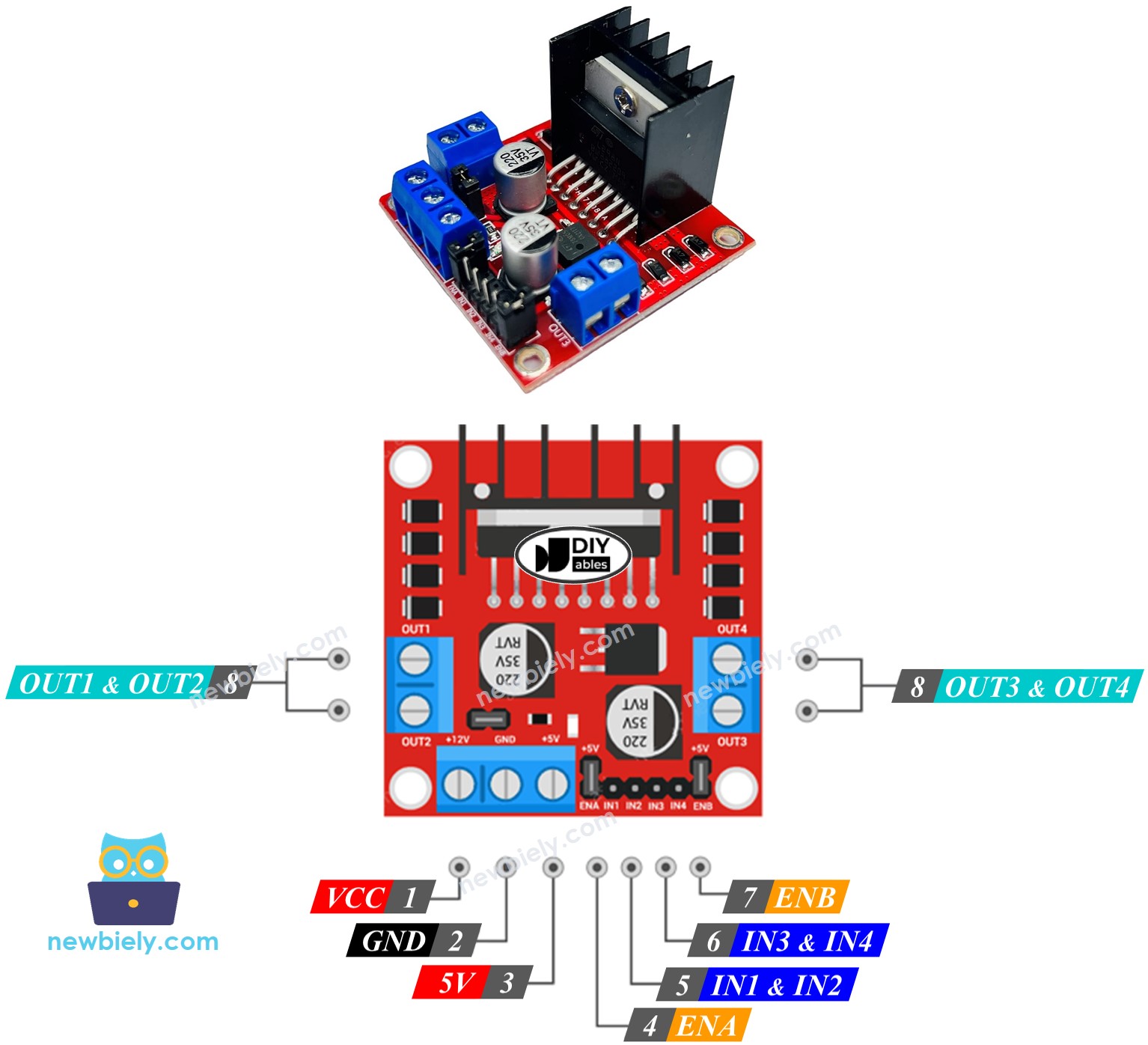Secure Your IoT: RemoteIoT Firewall Tutorial + Best Practices
Are your IoT devices sitting ducks in a world of ever-increasing cyber threats? They probably are, but the solution is here: remoteIoT firewalls are no longer an option, they're a necessity for anyone serious about protecting their digital life. This guide cuts through the jargon and delivers a clear path to securing your devices, whether you're a tech novice or a seasoned professional.
You might be thinking, "Do I really need this?" The answer is a resounding yes. The Internet of Things has woven itself into the fabric of our daily routines, from smart refrigerators to complex industrial control systems. But this interconnectedness comes with a price: vulnerability. A remoteIoT firewall functions like a vigilant guardian, scrutinizing every bit of data entering and leaving your network, ensuring that only authorized communication occurs.
| Aspect | Details |
|---|---|
| Name | N/A (General Concept) |
| Type | Cybersecurity Technology |
| Function | Protects IoT devices from unauthorized access and cyber threats. |
| Career/Professional Relevance | Essential for cybersecurity professionals, network administrators, and anyone involved in IoT deployment and management. |
| Key Skills Required | Network security, firewall configuration, understanding of IoT protocols, threat analysis. |
| Relevant Website | NIST Cybersecurity for IoT Program |
Cybercrime is a relentless adversary, constantly evolving and seeking out weaknesses. Neglecting IoT security is akin to leaving your front door unlocked. A mastery of remoteIoT firewalls isn't just a "nice-to-have"; it's a critical skill for safeguarding both personal devices and large-scale enterprise networks. This guide arms you with the knowledge and skills needed to proactively defend against malicious actors. So, let's delve into the essential details.
- What Makes Jackerman Mothers Warmth 3 Special Review
- Discover Hikaru Nagis Rise From Obscurity To Stardom
- What is RemoteIoT Firewall?
- Why RemoteIoT Firewall is Important
- Basic Concepts of RemoteIoT Firewall
- Types of Firewalls for IoT
- Setting Up a RemoteIoT Firewall
- Step-by-Step RemoteIoT Firewall Tutorial
- Best Practices for RemoteIoT Firewall
- Common Mistakes to Avoid
- Troubleshooting RemoteIoT Firewall Issues
- The Future of IoT Security
What is RemoteIoT Firewall?
Let's define our terms. At its core, a remoteIoT firewall is a specialized security solution designed to shield your Internet of Things ecosystem from unauthorized intrusions. Imagine it as a digital customs agent, meticulously examining all incoming and outgoing data packets to ensure compliance with established security protocols. The firewall's functionality hinges on the application of predefined rules that selectively filter out malicious traffic, thereby preserving the integrity of your IoT devices and network.
RemoteIoT firewalls come in various forms: hardware, software, and cloud-based solutions, each tailored to specific deployment scenarios. A distinct advantage of a remoteIoT firewall is its capacity for remote administration, offering the flexibility to secure your devices regardless of geographical location. This remote management capability is particularly relevant in today's increasingly distributed work environments and networked infrastructures.
Key Features of RemoteIoT Firewall
Several key features underscore the effectiveness of remoteIoT firewalls:
- Breaking Camilla Araujo Onlyfans Leak What You Need To Know Now
- Bhad Bhabie Sex Tape The Untold Story Career Impact
- Real-time Monitoring: Constant surveillance of network activity enables swift detection and neutralization of suspicious behavior.
- Customizable Rules: The ability to define granular rules allows you to tailor security policies to meet specific organizational requirements.
- Remote Management: Centralized control through web-based interfaces or mobile applications facilitates efficient administration from any location.
- Advanced Threat Protection: Integration of intrusion detection and prevention systems bolsters security posture by proactively identifying and mitigating threats.
Why RemoteIoT Firewall is Important
The importance of remoteIoT firewalls stems from the inherent vulnerabilities of IoT devices. Unlike conventional computers, many IoT devices lack sophisticated security mechanisms, making them attractive targets for malicious actors. A remoteIoT firewall provides a vital layer of defense, ensuring the confidentiality, integrity, and availability of your devices and data.
Consider the sheer scale of the IoT landscape: By 2022, the number of connected IoT devices had surpassed 1.5 billion globally. This vast network represents a multitude of potential entry points for cybercriminals. Without appropriate security safeguards, your smart home appliances, wearable technology, or industrial control systems could be compromised, potentially leading to data breaches, financial repercussions, or even physical harm.
Real-World Examples
The Mirai botnet attack serves as a stark reminder of the potential consequences. In 2016, hackers exploited vulnerabilities in IoT devices to orchestrate a massive distributed denial-of-service (DDoS) attack that crippled major websites such as Twitter and Netflix. This incident underscores the critical need for robust security measures, including the implementation of a reliable remoteIoT firewall.
Basic Concepts of RemoteIoT Firewall
Before delving into the practical aspects of setting up a remoteIoT firewall, it's essential to grasp several fundamental concepts. These concepts provide the foundation for understanding how firewalls function and why they are so effective in protecting IoT devices.
Packet Filtering
Packet filtering is a cornerstone of firewall technology. It involves examining individual data packets as they traverse the network perimeter. The firewall applies predefined rules to determine whether to permit or deny each packet based on criteria such as source and destination IP addresses, port numbers, and protocols. This process effectively filters out malicious traffic, allowing only authorized communication to proceed.
Stateful Inspection
Stateful inspection enhances packet filtering by maintaining a record of active network connections. It tracks the state of each connection, ensuring that only legitimate traffic is allowed to pass. This capability adds an extra layer of security by enabling the firewall to detect and block suspicious activity, even if it initially appears benign.
Application-Level Filtering
Application-level filtering extends beyond simple packet inspection by analyzing the content of the data being transmitted. This allows the firewall to block specific applications or protocols that may pose a security risk. For example, you could configure your firewall to restrict access to certain websites or prevent the transfer of specific file types.
Types of Firewalls for IoT
Not all firewalls are created equal; different types of firewalls cater to different needs. Several types of firewalls are specifically designed for IoT environments. Let's examine some of the most prevalent options:
Hardware Firewalls
Hardware firewalls are dedicated physical appliances that act as a barrier between your network and the external internet. They provide robust protection for your entire network and are ideally suited for organizations with extensive IoT deployments. Although hardware firewalls may entail a higher initial investment, they typically offer superior performance and security capabilities.
Software Firewalls
Software firewalls are installed directly on individual devices or servers. They are generally more affordable and easier to deploy, making them a viable option for smaller networks or individual users. However, software firewalls may require more ongoing maintenance and can potentially impact device performance if not configured optimally.
Cloud-Based Firewalls
Cloud-based firewalls combine the advantages of both hardware and software solutions. They provide scalable, on-demand protection without the need for dedicated physical infrastructure. Managed through a web-based interface, cloud-based firewalls are well-suited for remote teams and distributed networks. Furthermore, they are often more cost-effective than traditional hardware-based solutions.
Setting Up a RemoteIoT Firewall
Now that we've covered the fundamental concepts, let's discuss the process of setting up a remoteIoT firewall. While the specific steps may vary depending on the particular firewall solution you choose, the overall approach remains consistent. Follow these steps to effectively deploy and configure your firewall:
Step 1
Begin by selecting a firewall that aligns with your specific requirements. Consider factors such as budget, scalability, ease of use, and the level of protection needed. If you're unsure which option is best, consult with a cybersecurity expert to ensure you make an informed decision.
Step 2
Once you've selected your firewall, proceed with the installation and configuration process. This may involve setting up rules, defining access policies, and configuring network settings. Refer to the manufacturer's documentation for detailed instructions and guidance.
Step 3
After installation, thoroughly test your firewall to verify that it is functioning as intended. Monitor network traffic to identify any potential issues and make adjustments as necessary. Regularly update your firewall to protect against the latest security threats.
Step-by-Step RemoteIoT Firewall Tutorial
Ready to get your hands dirty? Here's a step-by-step tutorial to guide you through the process of setting up your remoteIoT firewall:
Step 1
Before you begin, take a comprehensive inventory of your network. Identify all connected devices, assess their security requirements, and prioritize critical assets. This will enable you to develop a tailored security strategy that addresses your unique needs.
Step 2
Next, define your security policies. Determine which types of traffic to allow or block, and create rules accordingly. Be sure to consider both inbound and outbound traffic to ensure comprehensive protection against a wide range of threats.
Step 3
With your security policies in place, it's time to configure your firewall. Set up rules, define access controls, and configure network settings to enforce your security policies. Utilize the firewall's user interface to make adjustments as needed to optimize performance and security.
Step 4
Finally, monitor your firewall regularly to ensure it's functioning properly. Keep an eye on network activity, update your firewall software, and adjust settings as needed to stay ahead of emerging threats and maintain a strong security posture.
Best Practices for RemoteIoT Firewall
To maximize the effectiveness of your remoteIoT firewall, adhere to the following best practices:
- Regular Updates: Keep your firewall software up to date with the latest security patches and feature enhancements.
- Strong Passwords: Use strong, unique passwords for all devices and accounts, and enable two-factor authentication (2FA) whenever possible to prevent unauthorized access.
- Segment Your Network: Divide your network into smaller, isolated segments to limit the potential impact of security breaches and contain the spread of malware.
- Regular Audits: Conduct regular security audits to identify and address vulnerabilities, ensuring that your firewall is configured optimally and your security policies are effective.
Common Mistakes to Avoid
Even with meticulous planning, mistakes can occur. Here are some common pitfalls to avoid when setting up your remoteIoT firewall:
- Ignoring Updates: Failing to update your firewall software can leave you vulnerable to known exploits and newly discovered threats.
- Poor Configuration: Misconfigured settings can create security gaps that allow malicious traffic to bypass your firewall and compromise your network.
- Overlooking Devices: Neglecting to secure all connected devices can create a weak point in your network security, allowing attackers to gain access and potentially compromise other devices.
Troubleshooting RemoteIoT Firewall Issues
Despite your best efforts, issues can sometimes arise. Here's how to troubleshoot common remoteIoT firewall problems:
Issue 1
Solution: Review your firewall rules and adjust them as needed to allow legitimate traffic to pass through. Use firewall logs to identify and resolve any false positives that may be blocking legitimate communication.
Issue 2
Solution: Optimize your firewall settings to improve performance. Consider upgrading your hardware or switching to a cloud-based solution if necessary to handle the traffic load and security demands of your network.
The Future of IoT Security
As the Internet of Things continues to evolve and expand, the security landscape will inevitably change as well. The future of IoT security will rely heavily on advanced technologies such as artificial intelligence (AI), machine learning (ML), and blockchain. These innovations will enable the development of smarter, more adaptive firewalls that can detect and respond to threats in real-time.
- Breaking Sophie Rain Leaked Unveiling Whats The Truth
- Unveiling Indian Viral Mms News What You Need To Know Now

5,736 Firewall Isometric Images, Stock Photos & Vectors Shutterstock

RemoteIoT Firewall Tutorial Comprehensive Guide To Securing Your IoT

RemoteIoT Firewall Tutorial Comprehensive Guide To Securing Your IoT